
Fall leadership event encourages leaders to bring hope
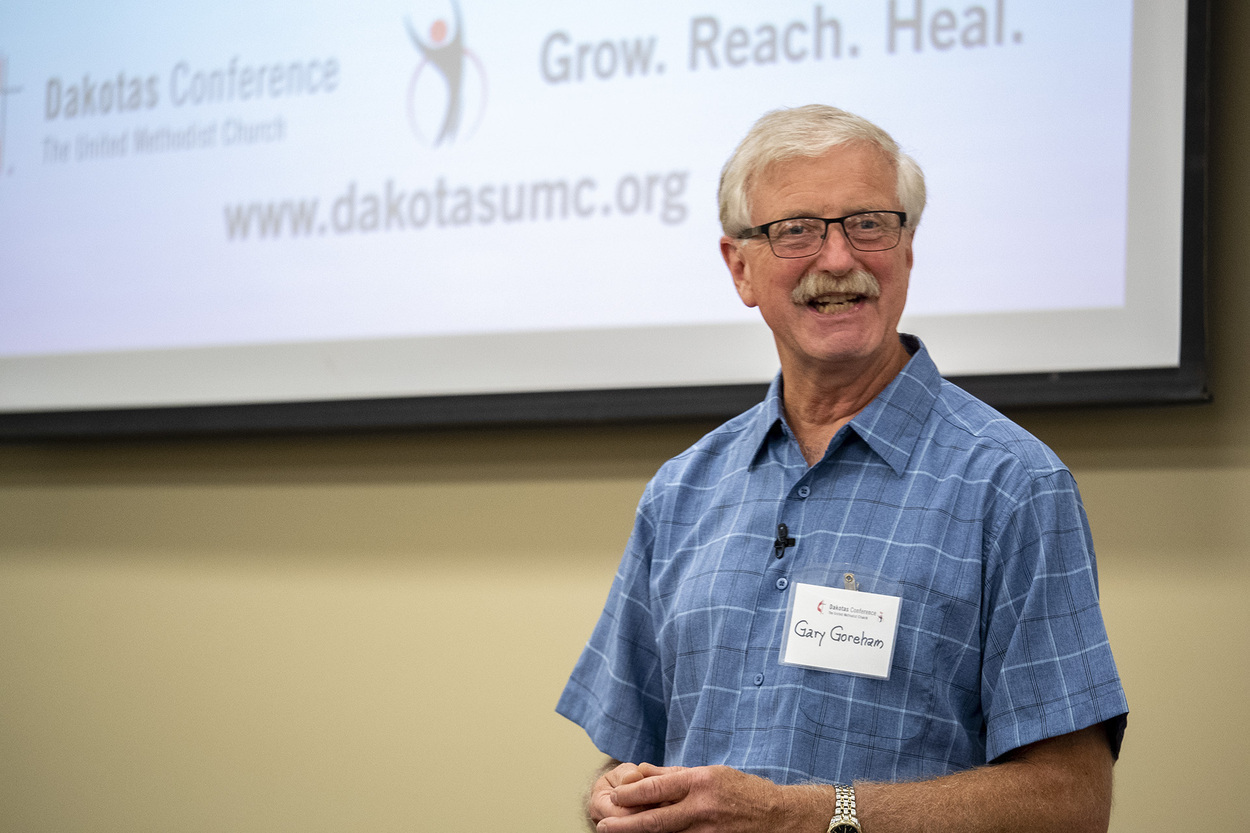
Dr. Gary Goreham, professor of sociology at NDSU, gave a lively and engaging presentation based on the ten megatrends transforming our communities and our congregations. Photos by Dave Stucke, Dakotas Conference Communications.
“As the church goes, so goes the community,” says Dr. Gary Goreham, a sociologist from North Dakota State University in Fargo, North Dakota. “You have the goods to give hope to your community. The Eucharist, God’s hope, connection with God. People cannot get it elsewhere.”
The church is a big deal in the Dakotas. According to Pew Research, in the United States, the people of Utah are the most churched, followed by Maryland, then North Dakota, South Dakota, and then Minnesota.
What is the role of the church in our culture? Goreham shared with Dakotas Conference leaders, ten megatrends and component parts that influence the role of the church in local communities.
Megatrends and component parts are globally sustained, significant development forces that impact and define the future. Megatrends are:
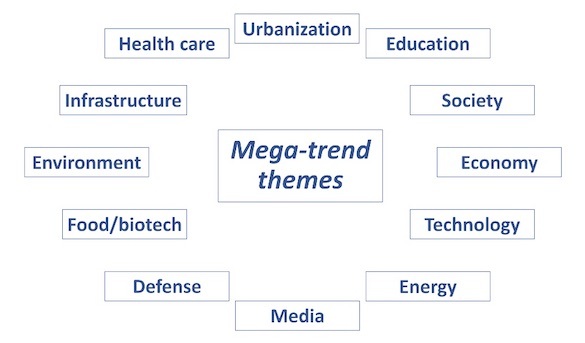
- Systemically interconnected.
- Addressed best through component parts.
- Global with local impacts, opportunities, and implications—ministry opportunities.
- Changing rapidly and with required new competencies.
- Reactions to the actions that we are taking now.
- Best understood by organizations through the lens of strategic scanners.
Based on the work of John Naisbitt, Goreham described the following megatrends that spiritual leaders and communities need to consider.
Urbanization and migration— The urban areas are where 54% of the population lives. A significant number of people in North and South Dakota live in rural communities. Building the quality of life in rural communities is critical. There has been an increase in megacities or areas—5 million-plus people, places like Seoul, Korea. This creates mega-regions—where people and cities blend, e.g., Seoul, Korea, with mega corridors for transportation and connection. Look at migration patterns. Highest migration rates are in the states of Minnesota, North Dakota, and then the state of Washington. Push factors like—climate, war, poverty, change in commercial agriculture influence migration patterns. Examine the net urban to rural migration rate, and who is being affected by push factors.
Technology: Green and smart cities—Cities are striving to be greener and more connected with technology. South Korea is connected; the whole country is one wi-fi. We are developing the internet of things (IoT). Cities are promoting self-driving cars and wireless telecommunications.
Technology: Smart business and industry—There is now 3d printing and lots of changes in equipment. There is a goal to innovate to be at zero—carbon, waste, traffic fatalities, security breaches. Moore’s law is in action, double the capacity of speed, mobilization, artificial intelligence, at least two times each year.
New business models—New business models are about personalization and customization. Many downtowns are declining. There is more part-time or temporary work. Data is a monetization.
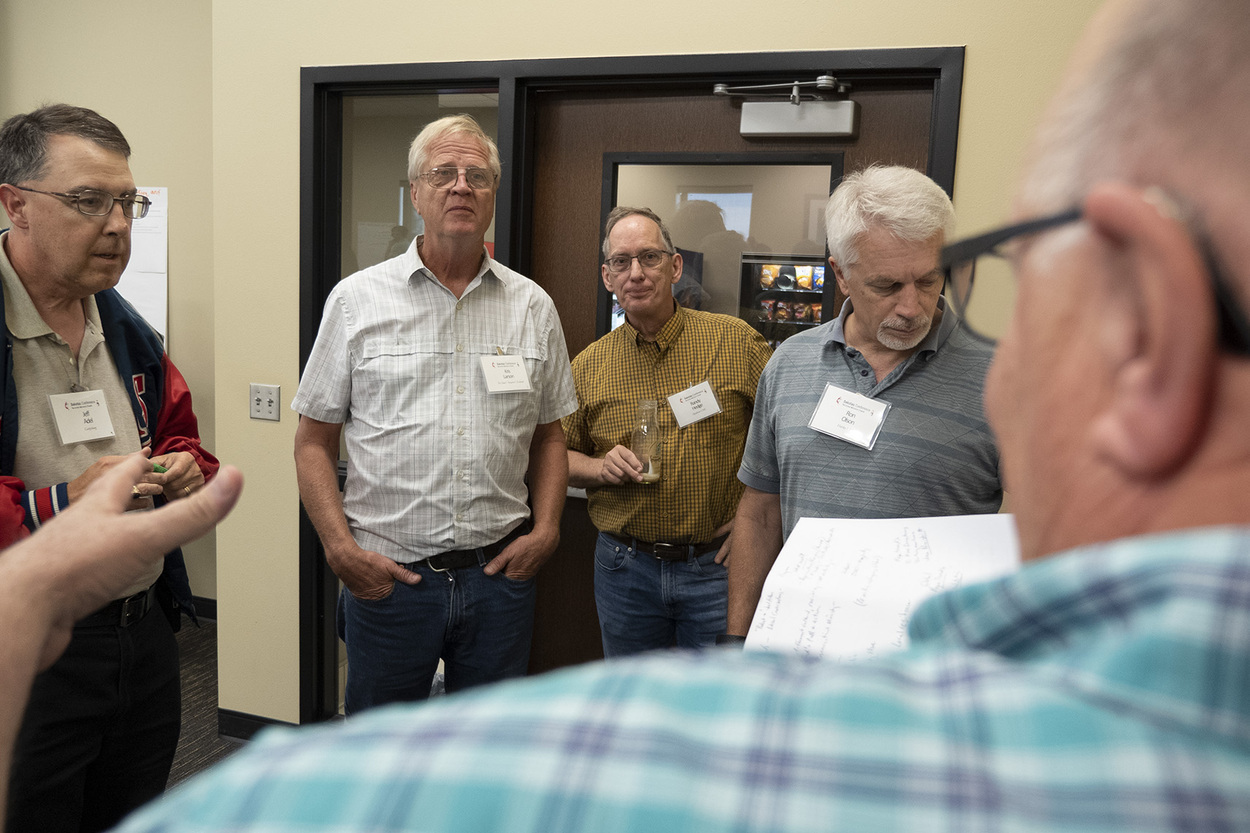
Pastors Jeff Adel, Kris Larson, Randy Hedge, and Ron Olson engage with Rev. Bob Ruedebusch, of Sioux Falls First UMC, in a discussion of demographics and generational trends.
Globalization—Competition for wealth, and connection of citizens of the world brings trade wars, outsourcing of agriculture, offshore, cheaper to do it elsewhere.
Geo-socialization, social networking—Connection socially with technology allows for homo and hetero genuity, geo-positioning, remote sensing, use of drones. This leads to privacy issues and questions about the security balance. What is the need—privacy versus convenience? When should we seek privacy versus transparency?
Demographics and generations—In the time of Jesus there were about a billion people, 1800 two billion, 1900 three billion, now the population is seven-eight billion. When are there too many people? Who will be the customers? The population is living longer. The birth rate has moved from 2.1 to 1.7 birth rate. Life expectancy is higher. Generation Y, those born between 1981-1999, is the more educated, and more active than previous generations.
Women empowerment—There is an increased number of women in leadership, higher income for women, and a higher rate of employment. More than 50% of growth in expendable income is due to women in the workforce and leadership.
Rise of the middle class globally—Currently, 42% of the world’s population are considered global middle class. By 2030, 50% of the poplulation will be part of the global middle class. Lifestyle, housing, transportation, ability to purchase the things you need with some options, and other durable items are influenced by the number of people who are part of the middle class. In general, this population is engaged in more vacations, entertainment, can weather a crisis in health, weather, and politics. There is still extreme wealth—1% control the world’s wealth. About 14% of the world’s population lives in extreme poverty.
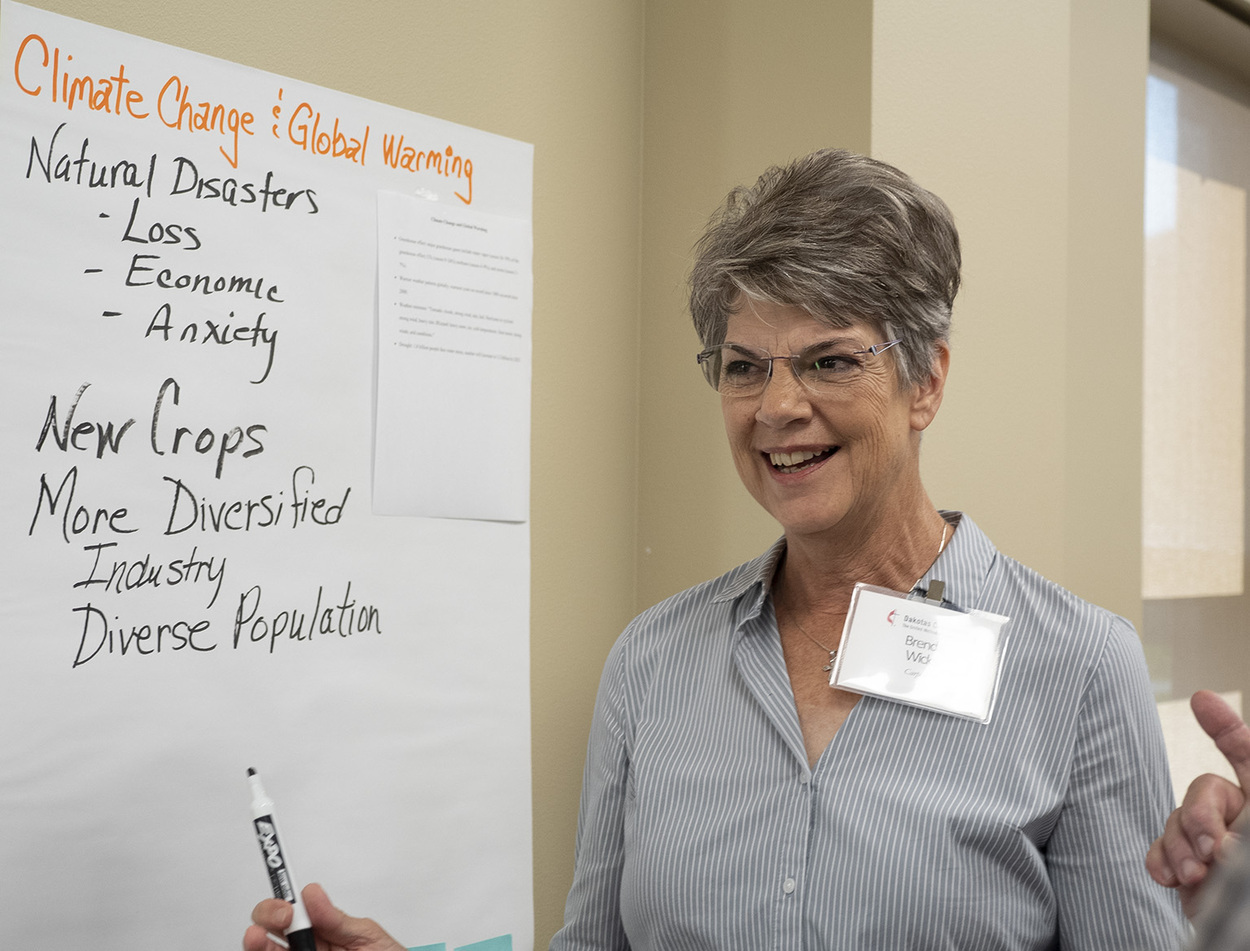
Participant Brenda Wicks was in the Climate Change small discussion group on Friday, taking notes for her group's concerns.
Climate change—Since 1880, weather records have been recorded. The warmest climate on records happened in the 2,000’s — Phoenix had more 115 degree days in the past five years than all proceeding years.
Participants at the fall leadership event, held on the campus of Dakota Wesleyan University, discussed the ten megatrends in small groups. Goreham presented these questions communities may need to ask about global megatrends:
- What aspects of the megatrend are evident in our community? How is the community, “feeling it?’
- What are the benefits of the megatrend for our community? What do we stand to gain?
- What are the challenges the megatrend poses to our community? What do we stand to lose?
- What opportunities might our community capitalize on with this megatrend? Who? When? How much?
Dr. Goreham challenged those present to build a resilient community. “All communities will experience some crisis, or hazard and sometimes multiple ones. It is essential to build resiliency through assets or practice asset-based community development—ABCD. "
Every community has a set of assets that Goreham believes can build up communities. Community assets include human capital—leadership skills, social capital—the strength of the relationship, political capital, cultural capital, financial capital, natural capital, and capital that is built—buildings and infrastructure.
“We all have hope, that is why we are in ministry,” says Goreham. “We are not hopeless and ‘heaven and earth will be remade.’”
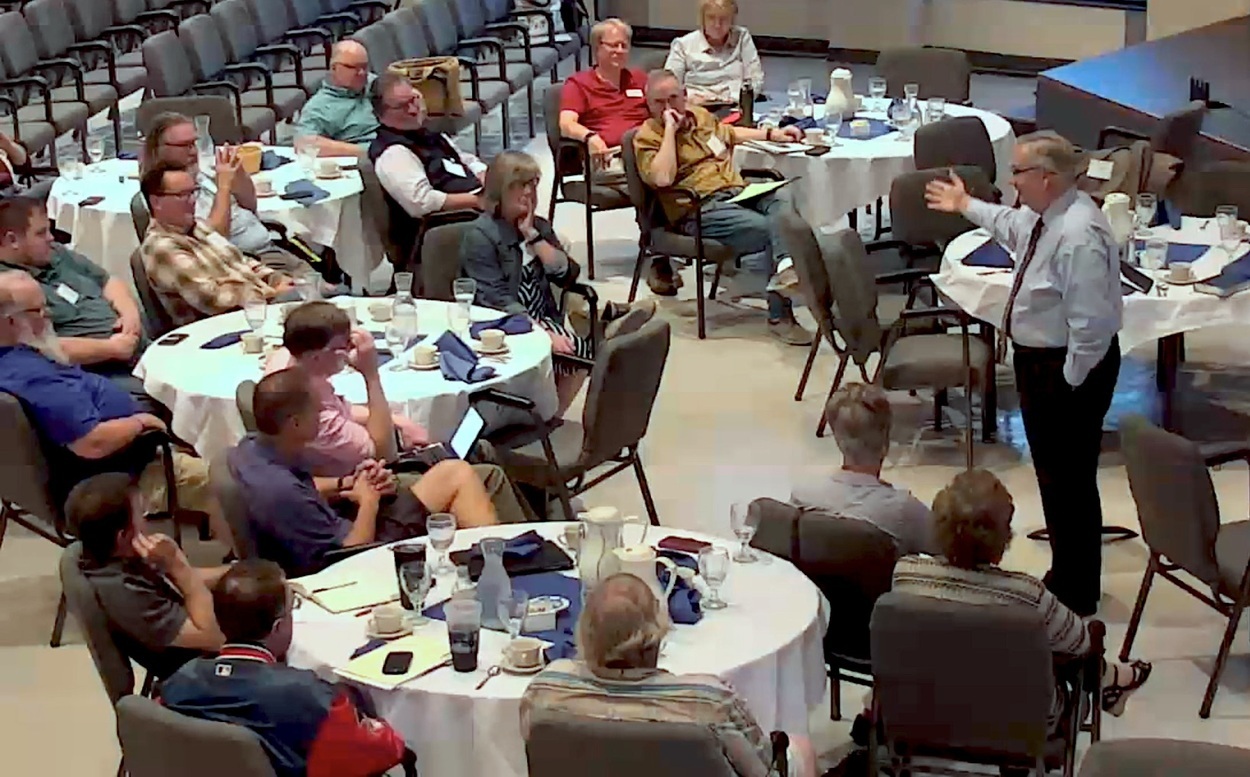
Bishop Ough invites the participants in the Fall Leadership Event to seek out the ways they can strengthen their communities and congregations.
Bishop Ough shared a message with attendees during the Friday evening worship service. He based his message on Luke 10: The story of the good Samaritan.
“Our culture has changed, the demographics have changed, what has not changed is Jesus’ mission,” said Ough. “Transformed lives, transform other lives. Changed lives, change lives. Even in our rural communities, there are people in the mission field. We don’t lack for neighbors and the need to be neighborly.”
On Saturday, participants spent time developing action plans for the mission field based on the ten megatrends.
Ough challenged those present to not only be leaders in local communities that wrestle with the megatrends but to wrestle in their congregations with the current conflict around homosexuality in The United Methodist Church.
“Now is the time we must stay with the trouble. We must ask the question; how can we deepen our affection for Jesus? Not, how can I fix this? We need to keep Jesus, the main thing,” says Ough. “It is not time to fly apart. It is time to stay strong, stay together. We need to stay strong by continuing the great ministries we have. “
Ough shared that the story about Samaritan women at the well is about common ancestry. "Jesus knows she is a Samaritan. The well was built for and by people of a common ancestry, the Samaritans," he says. “What is our well, our common ancestry? What well reflects our common ancestry?”

The demographics group continued their discussion to find solutions on Saturday morning.
Bishop Ough suggested that there are three words that bind us to a common ancestry, three core values in the Dakotas—Jesus, mission, connection. “Jesus, mission, connection, that is my suggestion as to what our common ancestry is, our well. Listen for where Jesus is lifted up, listen for the testimonies, share the stories, be in mission, and strengthen our connection.”
View videos from the Fall Leadership event here.
View Dr. Goreham’s Power Point here.
View discussion notes from various sources here.